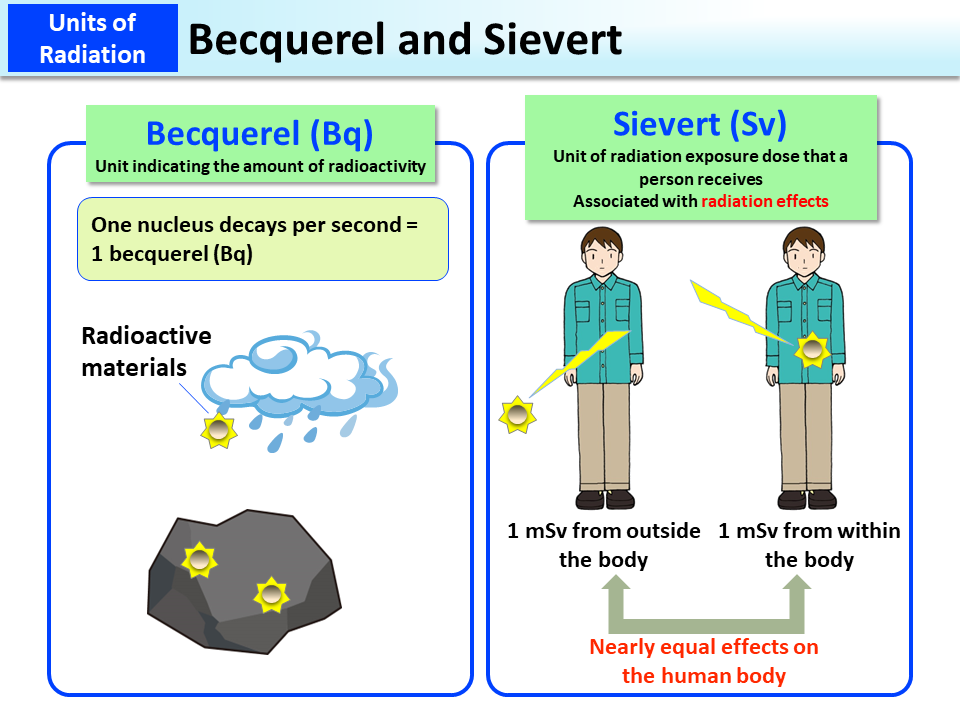Becquerel and Sievert
“Becquerel” and “sievert” are the most common units of radiation. Becquerel is a unit of radioactivity and focuses on where radiation comes from. It is used to express the amount of radioactive materials contained in soil, foods, tap water, etc. The higher the value expressed in becquerels, the larger the radiation being emitted. Sievert is a unit of radiation exposure dose that a person receives and is used with regard to what is exposed to radiation, i.e. the human body. The larger the value expressed in sieverts, the larger the effects of radiation to which the human body is exposed (p.40 of Vol. 1, “Concepts of Doses: Physical Quantities, Protection Quantities and Operational Quantities”).
The extent of radiation effects on the human body varies according to the types of exposure, i.e., internal or external exposure, or whole-body or local exposure (for details, refer to Vol. 1, “2.1 Exposure Routes”), and according to the types of radiation (for details, refer to Vol. 1, “1.3 Radiation”). By using sieverts to express all types of exposure, it is possible to compare their effects on human body.
External exposure of 1 mSv and internal exposure of 1 mSv are deemed to have equal effects on the human body. Exposure to 1 mSv of radiation from outside the body and exposure to 1 mSv of radiation from within the body mean exposure to a total of 2 mSv of radiation.
- Included in this reference material on March 31, 2013
- Updated on March 31, 2019

